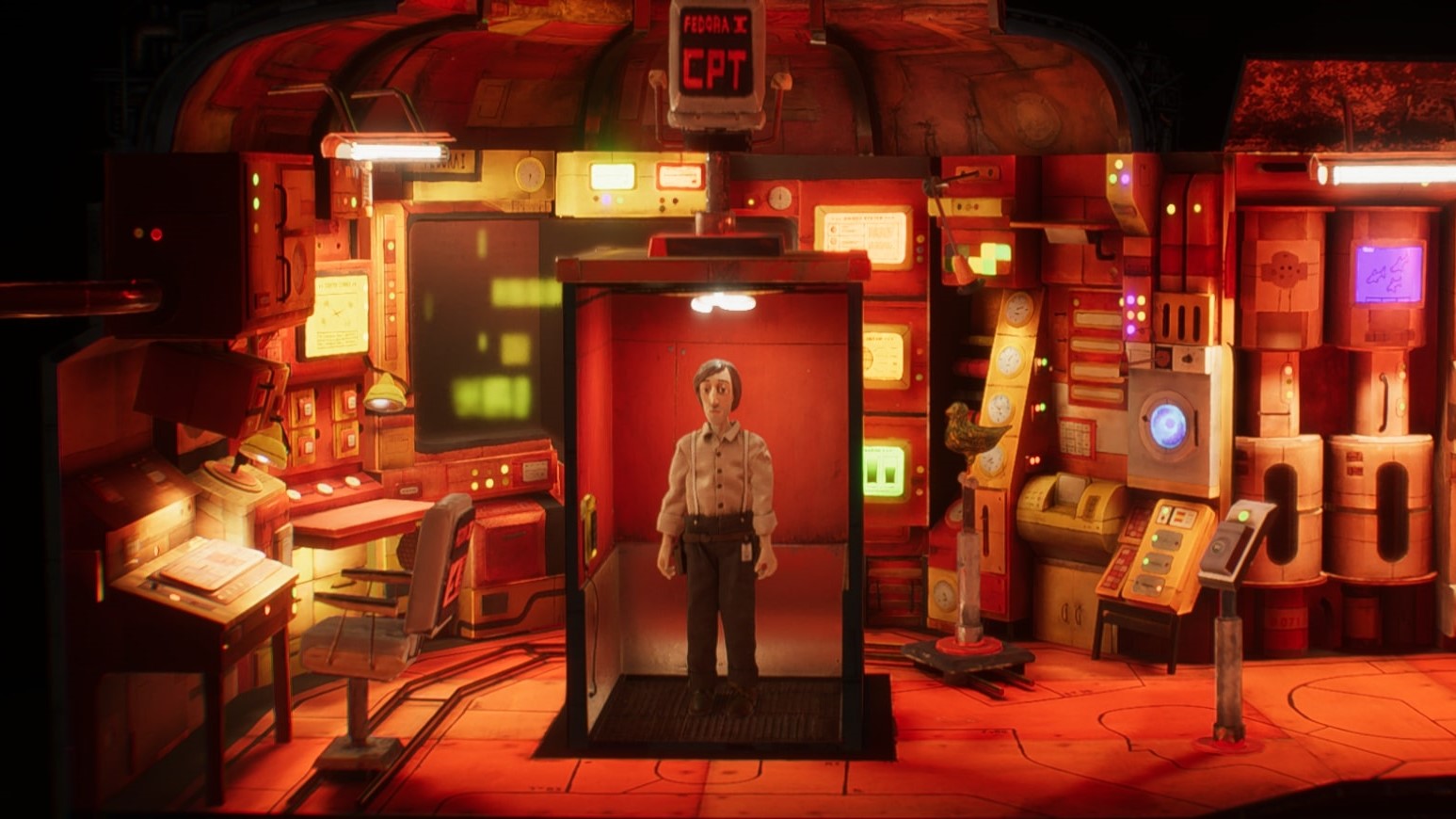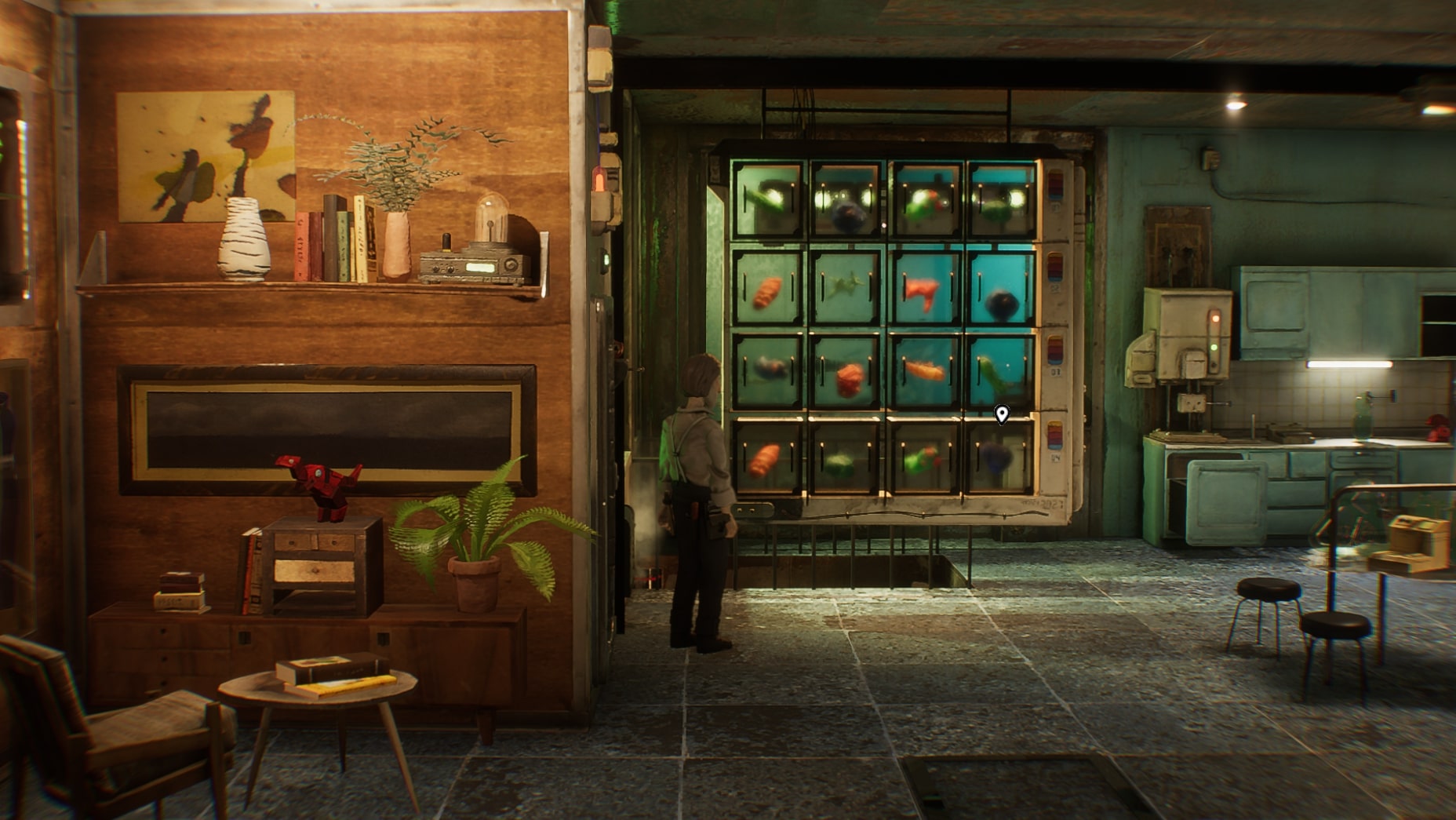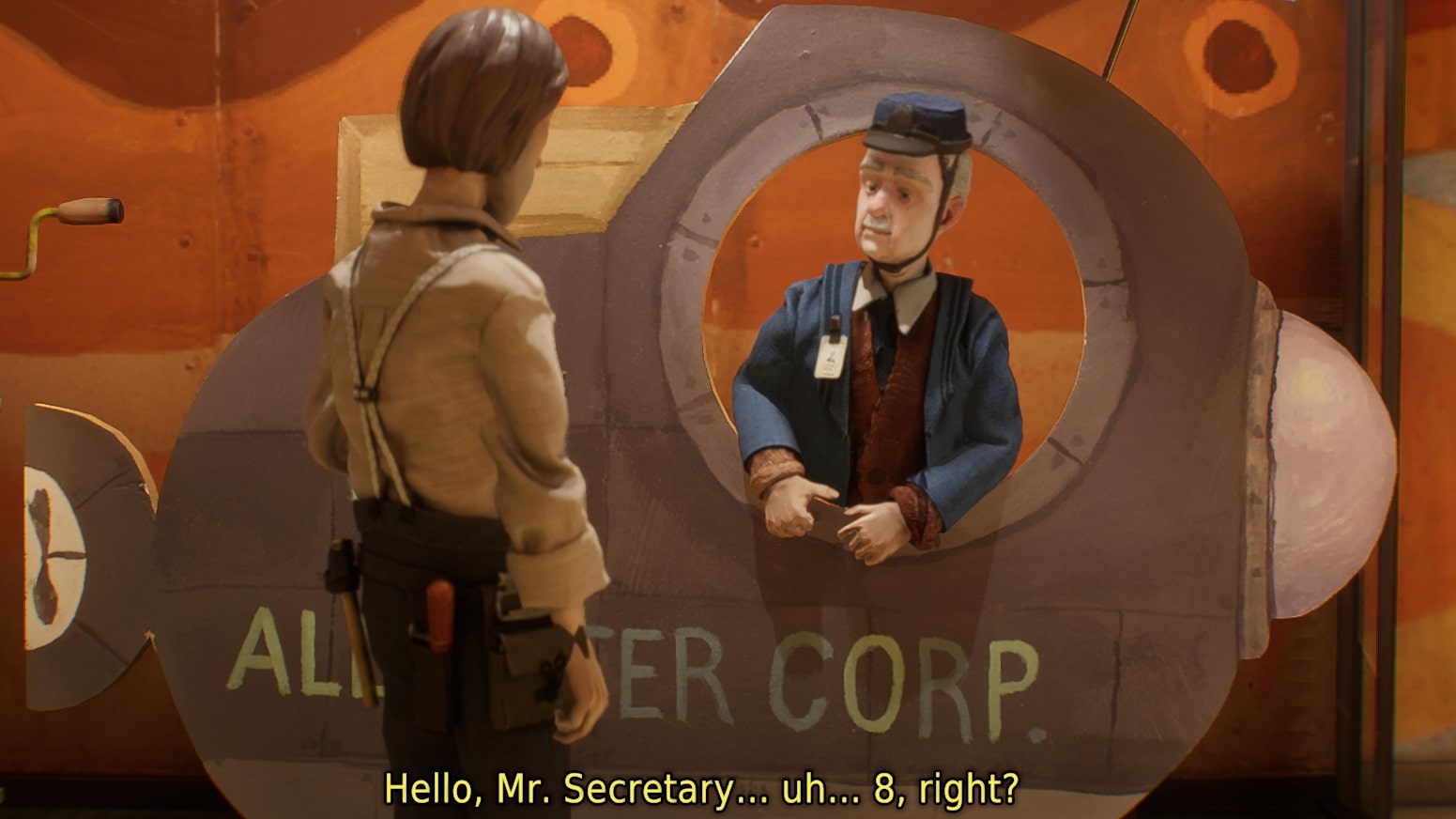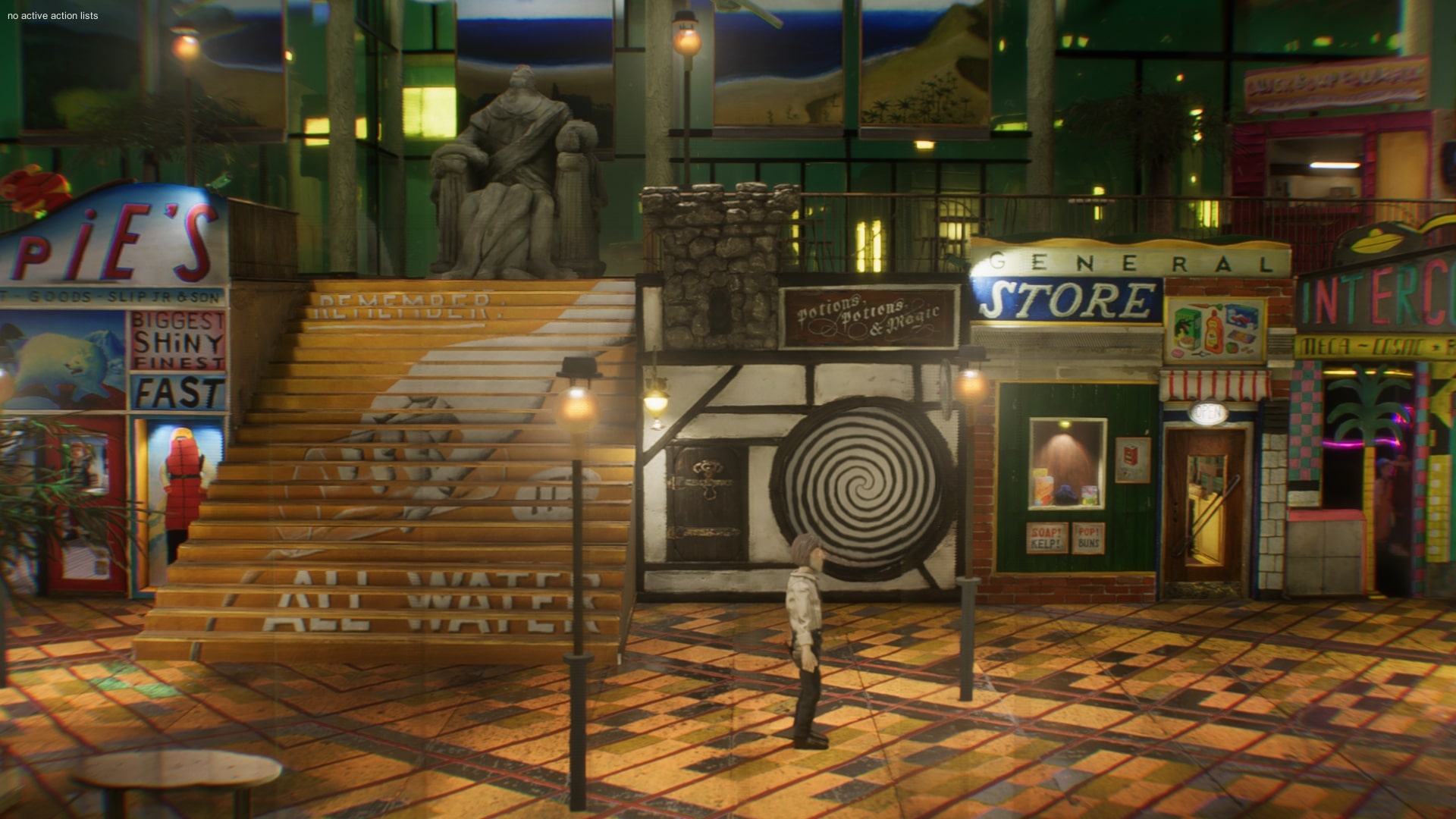Harold Halibut is a 10-year stop-motion project crafted from clay, wood, and metal
We chatted with Harold Halibut's game director about how the team pieced-together such an intricate world.

If you fling the last humans to a distant planet and raise them on an underwater city-sized spaceship for 250 years, you're bound to end up with some weirdos. Harold Halibut is about that exact group, and it turns out that humanity's last hope are indeed a quirky bunch.
Harold is the ship's handyman, and the lab assistant to the ship's lead scientist who is trying to find a way to get the ship unstuck and back into space. After leaving Earth on the edge of a crisis, the ship's residents hoped they would find another planet, but instead crash-landed, and are trapped beneath the waves of an alien planet. Not that they seem to care much—many of the ship's inhabitants have made peace with their new underwater life.
It's a sci-fi adventure that developer Slow Bros say tackles the topics of love, family, grief, and relationships in general. But Harold Halibut's main attraction is the gorgeous stop-motion animation that's taken the team years to perfect.

Fabian Preuschoff, the set architect, would build the set at a 1:10 scale from materials ranging from children's clay to wood or welded metal
Onat Hekimoglu, game director
"Almost ten years," Slow Bros' game director Onat Hekimoglu says. "Counting initial idea gathering, years of experimental technology development next to school and other jobs, setting up a company, and a lot more. We're excited to provide a really dense world-building setup that lets your curiosity guide you."
That's exactly what I do as I play through the game's first chapter. The preview is light on story and instead lets you explore the submerged city. It's incredible knowing that everything has been made by hand. The delicate facial features of the character models, every item on the general store's shelf, the wooden floorboards, rusty pipes, knitted jumpers—there are hundreds of tiny details.
"Fabian Preuschoff, the set architect, would build the set at a 1:10 scale from materials ranging from children's clay to wood or welded metal," Hekimoglu says. "Then it would be painted, 'aged' via chemicals that create rust and other patinas, then add the details like dirt/dust smeared on the wall."

You can see this 'aging' process as you wander around the ship. The detail I love the most are the rusted wedges of the metal corridors where water has seeped through. If you look carefully, you can see the painterly brushstrokes on faded posters and store signs, and even the tiles on the arcade floor look like someone has cut out hundreds of tiny vinyl squares. One character wears a tiny, well-worn knitted jumper with a smiley face sewn in.
Keep up to date with the most important stories and the best deals, as picked by the PC Gamer team.
Hekimoglu explains that the team uses the description of 'stop-motion', but more accurately they use motion capture and 3D animation software to help with the process. That still means that everything you see in the game has to be made by hand, mind. One inspiration that Hekimoglu lists is the stop-motion and miniature model work of Wes Anderson.
Exploring the ship, you get introduced to many of its inhabitants. There's Buddy the postal worker, who has beefy calves and runs everywhere, insisting he keeps his promise of same-day delivery. The general store owner, Tommy, believes his wife has lost interest in him and, in an attempt to win her back, builds a neon sign above his store declaring his love for her. There's Mr. Secretary 8 and his brothers 9 and 10, who are from a long line of ship stewards, look identical to one another and are always eager to help out. My favourite is the shop owner of a clothing store whose sheer excitement for selling winter wear on a spaceship with zero climate is remarkable.

At one point, Harold is asked to help fix a 3D printer. As I carefully remove all the screws from the machine the last one gives Harold an electric shock. The scientist who had asked for help bursts out laughing, explaining that it was all a prank—looks like this is the pinnacle of comedy 250 years in the future, folks.
The people living on this ship are supposed to represent a cross-section of what it might be like to isolate a human population for a long time
Onat Hekimoglu, game director
In the full game, each of the oddballs will have a dilemma that you'll need to solve. It's a small community, and Slow Bros has to try and imagine what humans would be like after decades apart from Earth. "The people living on this ship are supposed to represent a cross-section of what it might be like to isolate a human population for a long time," Hekimoglu says. "We tried to balance earthly contemporary conventions and an amplified 'game of Telephone' version of conventions from the past."
Using the game Telephone is a really great way of describing what's happened to the ship's residents. As generations passed, human attitudes and verbal stories of Earth have slowly been retold and retold until the current generation really don't have a connection to their ancestor's place of birth.

This ties into Harold Halibut's main story. Underneath the oddball hilarity though, a different feeling stirs. The end of the preview reveals that Earth is thriving and that the ship—when it gets unstuck—could return home (a story that's been revealed in the game's most recent trailer). Who knows what this means for the community, with many of the residents only ever having known the inside of the ship.
Harold Halibut's story has an interesting hook, but I could stare at its gorgeous claymation for hours. I'm loving the idea that the last of humanity ended up being a bunch of crackpots and, hopefully, we'll get to meet them soon. Slow Bros don't have a release for Harold Halibut, but says that it's "coming soon."
Rachel had been bouncing around different gaming websites as a freelancer and staff writer for three years before settling at PC Gamer back in 2019. She mainly writes reviews, previews, and features, but on rare occasions will switch it up with news and guides. When she's not taking hundreds of screenshots of the latest indie darling, you can find her nurturing her parsnip empire in Stardew Valley and planning an axolotl uprising in Minecraft. She loves 'stop and smell the roses' games—her proudest gaming moment being the one time she kept her virtual potted plants alive for over a year.


